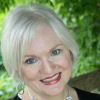|
I
have a confession to make. Whenever I’m asked to write a column, a
blog, or speak about writing, I never know what to say. My thoughts
usually go like this: “What do I know about the writing process?”
I came to a writing career later
in life. I didn’t take courses on creative writing in college. Except
for a nonfiction magazine article here and there and a story in a
compilation now and then, I’d never considered a writing career.
Writing was natural to me because I grew up in a family of newspaper
editors and authors. Mountains of manuscripts were stacked throughout
our house. I can still hear the click-click-click of my father’s
two-fingered speed pecking on the keys of the old Underwood typewriter.
What I learned about writing, I learned through being around it.
When I started writing fiction,
I really knew nothing about the “rules.” I didn’t know that the hero
and heroine were supposed to meet in the first chapter. I knew nothing
about plot structure, character development, or scene flow—and I
certainly didn’t know what HEA or POV meant. I simply had a story to
tell, and I told it in my first novel, In the Shadow of the
Sun King, which was based on my French Huguenot ancestors in
seventeenth-century France. I envisioned a three-book series.
I procured an agent, who sold
the series to a large publishing house. I became a published author.
The first novel went pretty well, but with the second and third novels,
we hit some bumps in the process. I ended up doing three major rewrites
on the third book, which concluded the series. None of my first three
books did I outline. My editor said that I was an organic writer, but I
didn’t even know what that meant. Since then I’ve learned that it means
I write by the seat of my pants. But after having to do so many
rewrites on the third book to deepen characters, get the spiritual arc
correct, and create more tension, I decided that perhaps I’d better
look at trying to outline my next book. I was learning.
I studied different plotting
methods and decided to outline my Civil War novel, His
Steadfast Love, according to the Hero’s Journey.
I studied blockbuster movies that followed this structure. I purchased
3x5 cards, and using a purple pen, I recorded on the corresponding
cards what needed to happen at certain points in the book, i.e. leaving
the ordinary world, answering the call to adventure, and so on. Then I
started filling in the story—in pencil, for the story moved and
breathed as I wrote, but the mechanics of plotting story was becoming
more clear to me. I taped each chapter to the wall around my office.
|
It
was difficult for me to discipline myself to plot out the entire story
before actually writing it, but I kept going. And I got it done. There
it was—the skeleton of my book hanging on the wall of my office. As I
filled in the flesh and blood of the story, I referred again and again
to the cards on the wall, tweaking and refining as I progressed.
When
I finally hit the SEND button to submit the manuscript for His
Steadfast Love, it was with some trepidation, but after my
editor read it, she proclaimed that it was my best book. We had very
little editing to do on the plot, so I suppose my efforts and angst at
moving from a panster to a plotter were worth it.
Not everyone needs to follow
this method, but all authors need to continually work on perfecting our
craft. We need to grow and mature in our writing no matter our age or
temperament or writing method. It’s never too late to learn.


|









